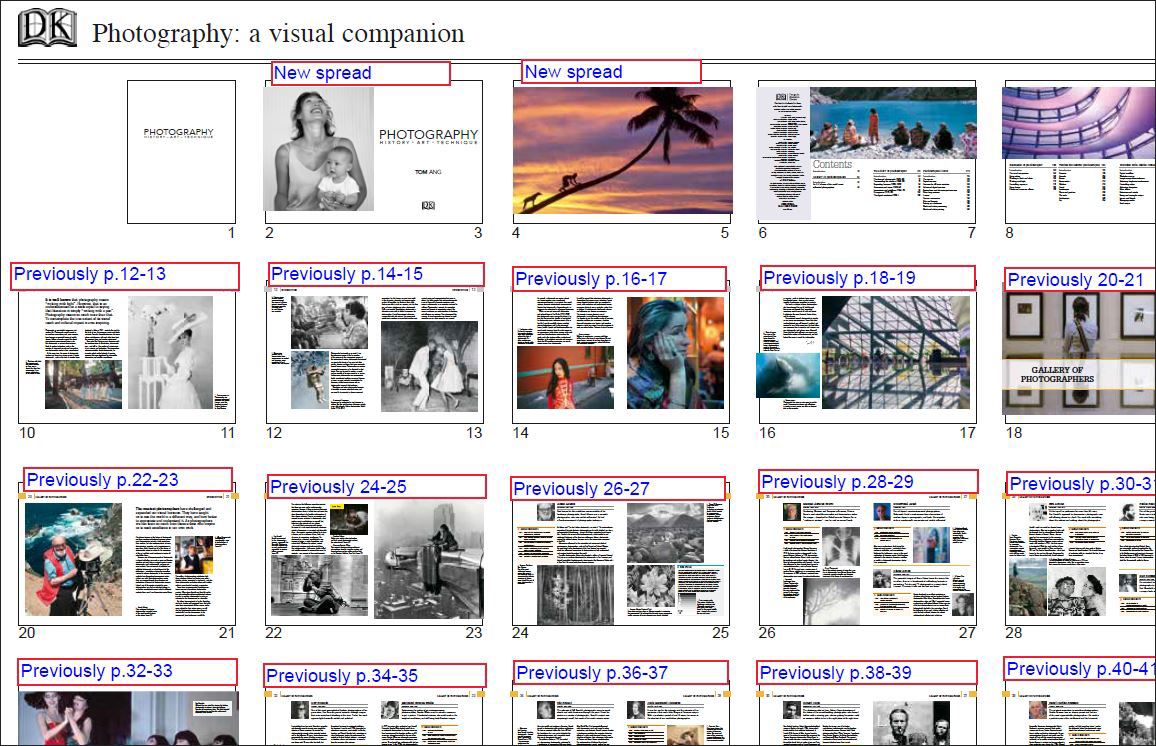Corrections and mark-ups
We make changes to our titles for many reasons: factual errors, technical errors, preferential changes to accommodate customers etc… And these can be initiated for many reasons: co-ed partner requests, reader queries, new editions/updates etc…
Regardless of the type of change, or what initiated it, Sales Ops needs to be informed of all changes relevant for our co-edition and foreign language customers. There are often very tight time constraints with current or upcoming printings, so changes need to be supplied as soon as possible.
IPL work with over 500 different customers, so there is a high chance that at least one of them is printing any title at any given time.
When changes are made to a title
What is needed?
- Mark-up
- Summary document (if more than 5 pages have changes).
- Marked-up flatplan, or repagination list (if there has been a pagination change).
- Word count of updated words only (if changes are made for a new edition, or if the changes are extensive).
- Percentage of updates, eg. 5% Text updates and 15% CMYK updates (if changes are made for a new edition, or if the changes are extensive).
Changes we need to know about
- Any content changes (Text and CMYK).
- Any positioning changes (Text and CMYK).
- Background colour changes (if they affect the text, eg. removing, or adding black backgrounds and reversed out text).
Changes we don’t need to know about
- Spelling mistakes (unless it’s a name/brand etc…).
- Punctuation mistakes.
- Image tints/brightness changes etc…
If ever you’re unsure if something is relevant, please ask your Sales Ops contact.
How to create the mark-ups
- All changes should be supplied as a single, multi-spread PDF (single spread if only a single change) using the PRH_PDF_PositionGuides_and_MarkUps preset (do NOT add a watermark).
- The spreads should be the new, corrected versions.
- All changes should be clearly highlighted and annotated.
- Annotations should be made using the red text boxes, using the tool called “Text Callout” in Acrobat (not sticky notes etc…). To access the “Text Callout” tool, go to the Comment toolbar, click on the “Drawing Tools” icon. From the dropdown menu, select “Text Callout.”

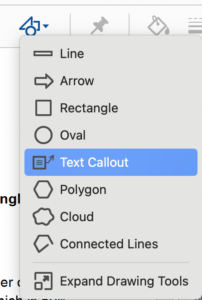
- Annotations do not need to be very detailed, but should be clear about what’s changed (i.e “text updated”, “new text”, “new image”, “image replaced”, “text moved from CMYK to text layer” etc…).
- Only spreads that have been changed should be included.
- If the page number is not visible on the page, please include this.
- As well as a “marked-up flatplan”, or re-pagination list”, repagination should also be noted on the relevant spread/s in the mark-up, stating the old page numbers.
Naming Convention
- Main mark-up
- “Work Ref”_”Year” “Title”
(e.g. 316672_2020 Universe)
- “Work Ref”_”Year” “Title”
- Summary doc
- “Work Ref”_”Year” “Title” (mark-up summary)
(e.g. 316672_2020 Universe (mark-up summary))
- “Work Ref”_”Year” “Title” (mark-up summary)
- Marked-up flatplan / re-pagination list
- “Work Ref”_”Year” “Title” (marked-up flatplan) / “Work Ref”_”Year” “Title” (repagination list)
(e.g. 316672_2020 Universe (marked-up flatplan) / 316672_2020 Universe (repagination list))
- “Work Ref”_”Year” “Title” (marked-up flatplan) / “Work Ref”_”Year” “Title” (repagination list)
Mark-up examples
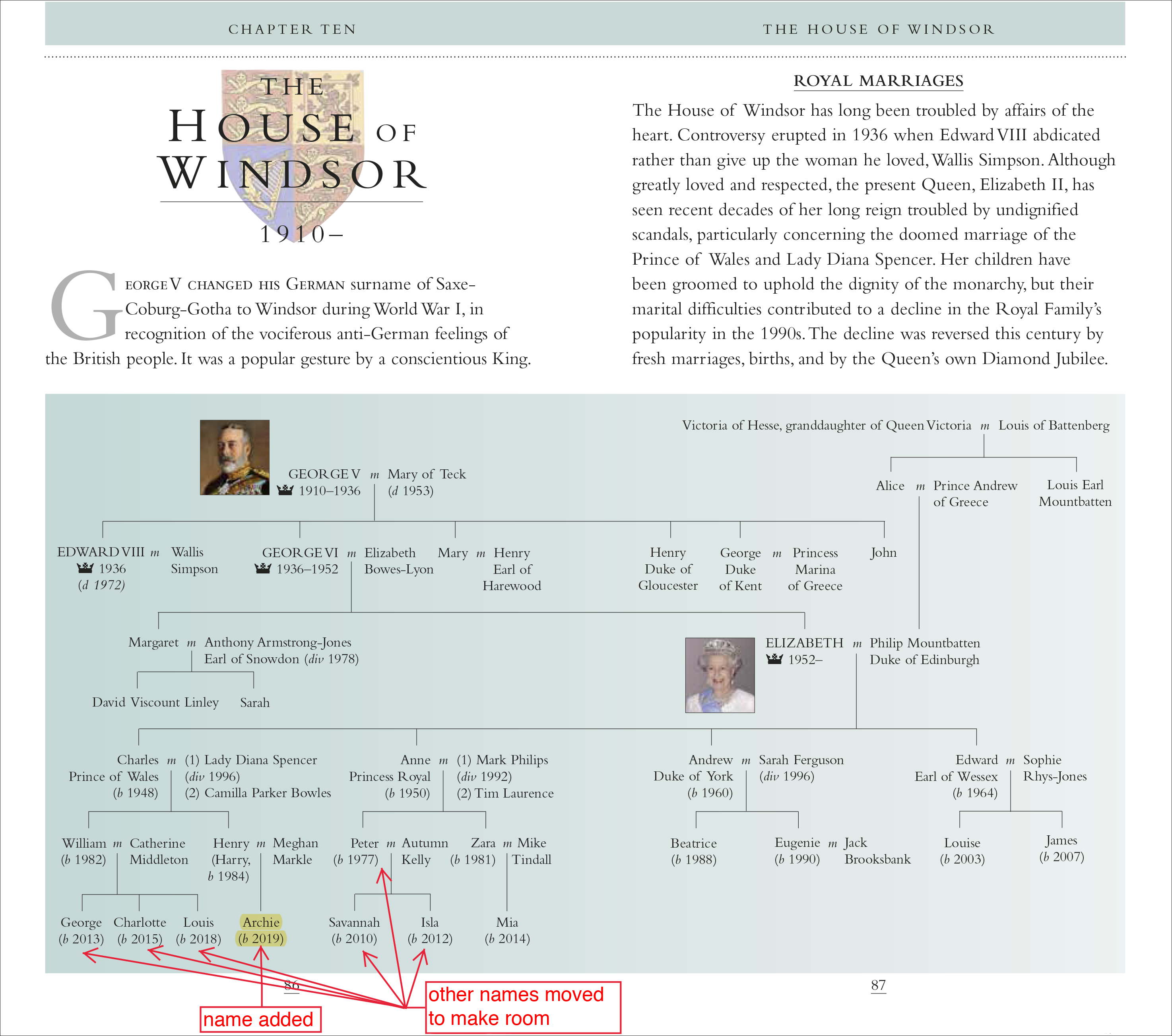
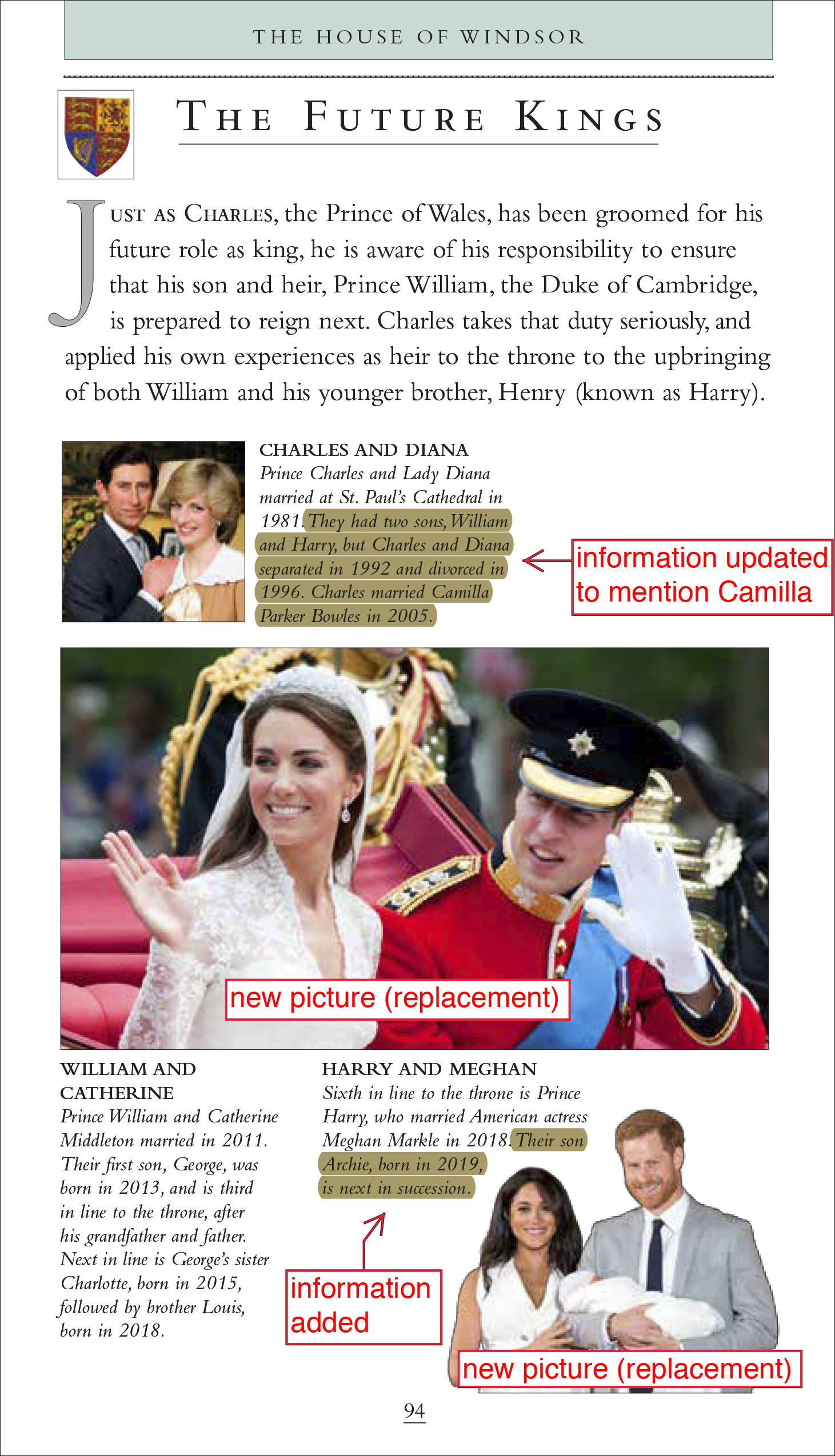
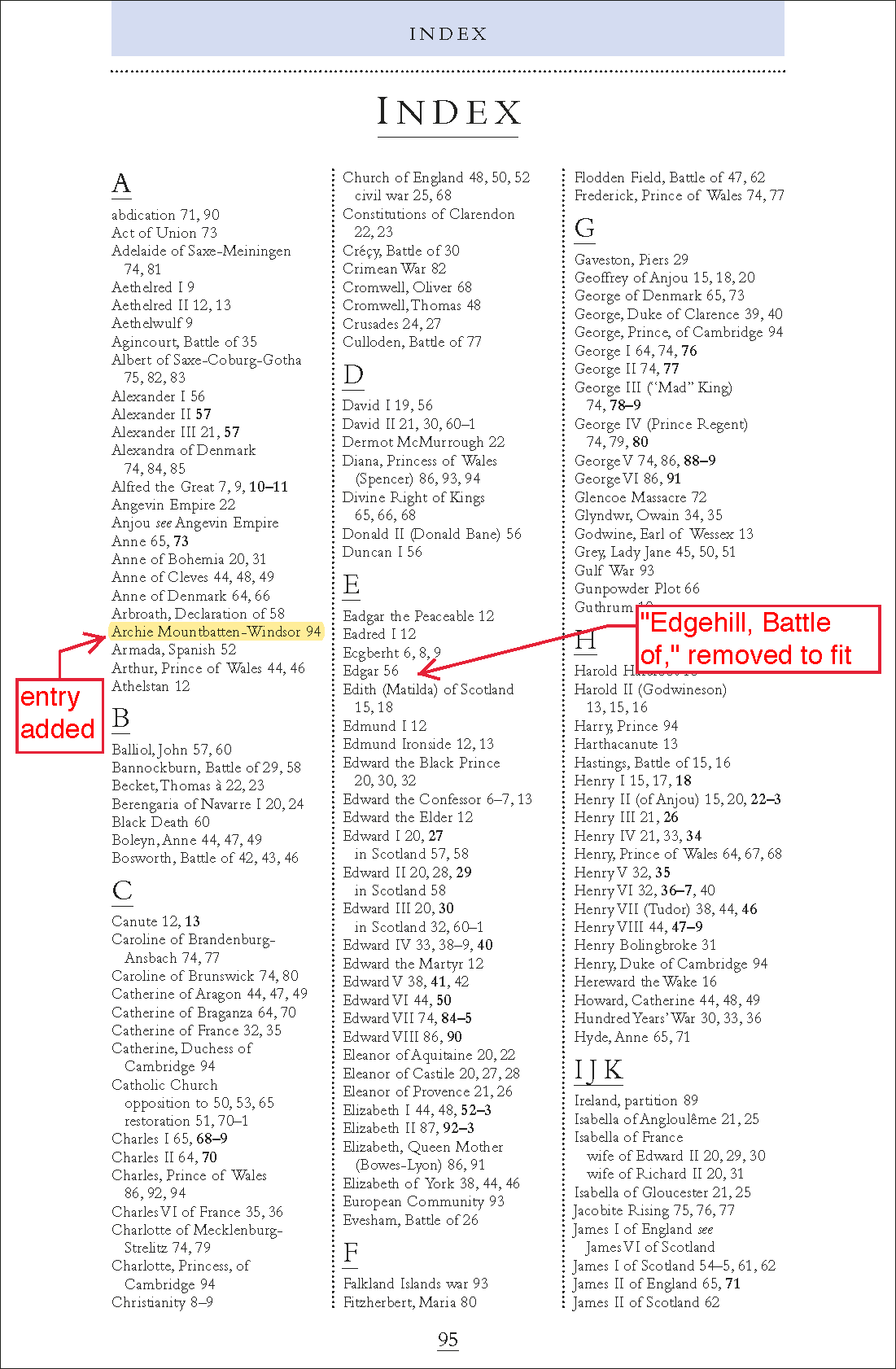
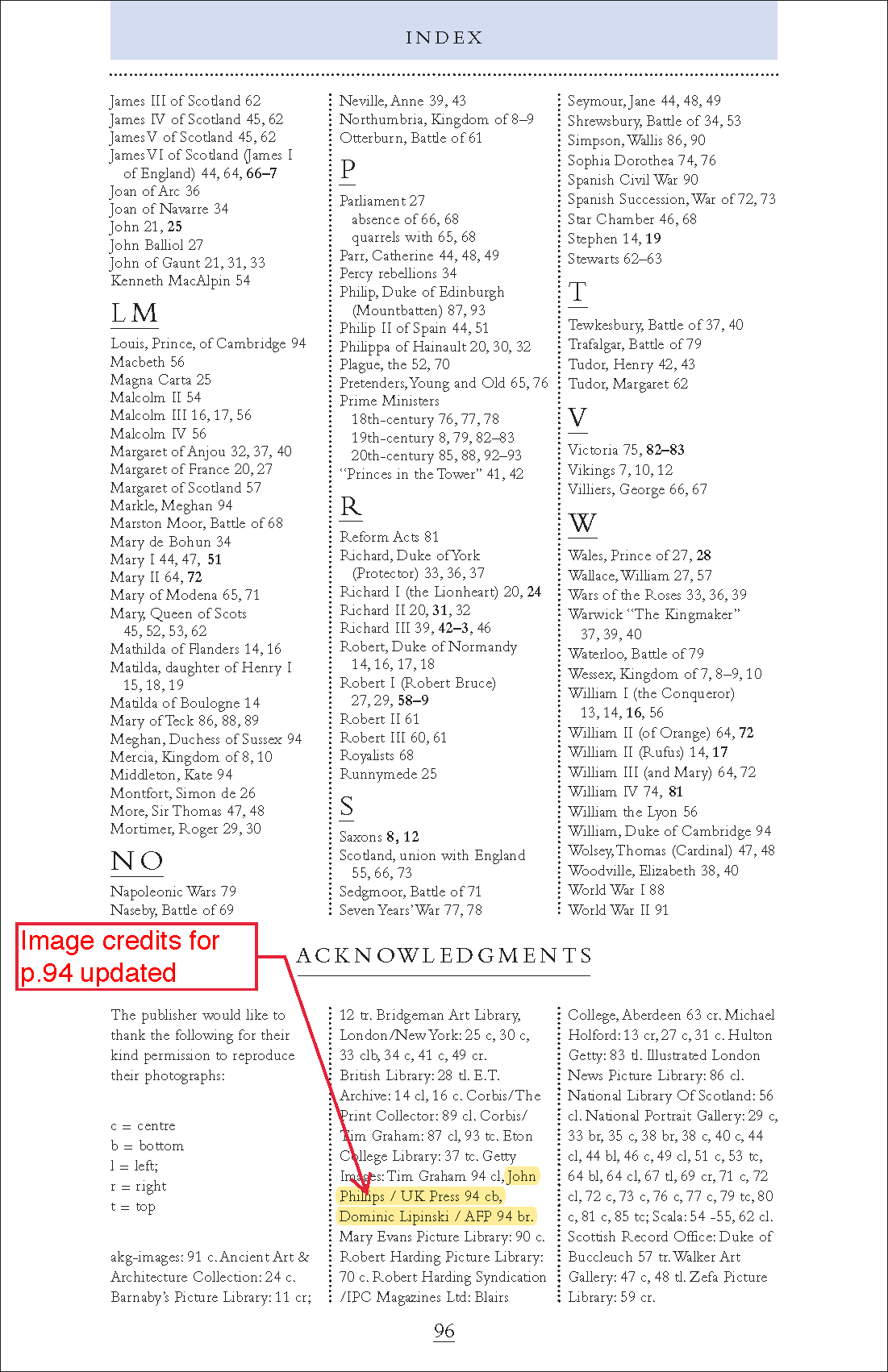
Summary doc
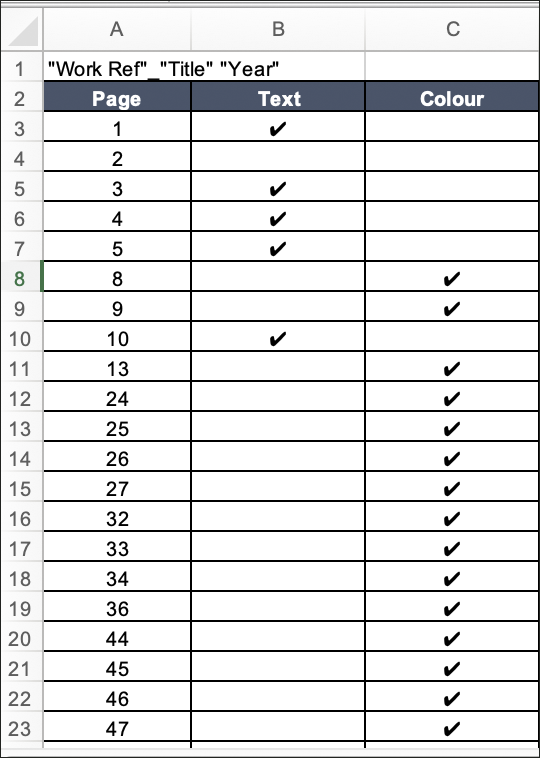
Repagination summary
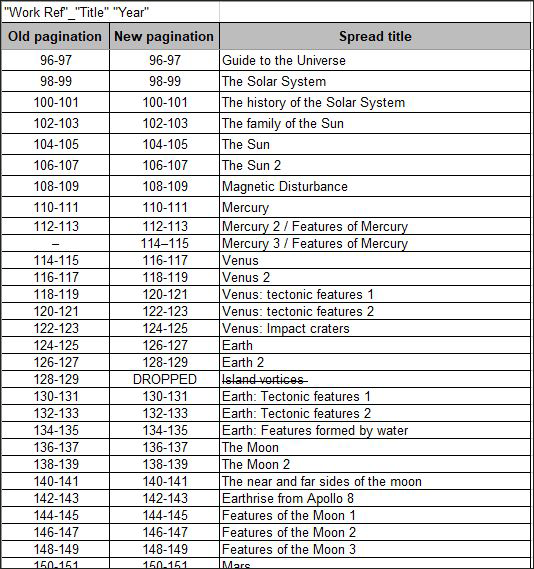
Marked-up flatplan
